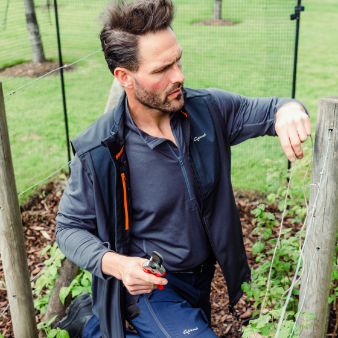Gardeners' notes - what to do in January

Prune Pleached Limes
Now is a good time to prune your pleached limes if you're lucky enough to have them. These ‘hedges on stilts’ are a dramatic feature in a garden but must be well looked after to maintain the full impact. All the new growth (those long straight shoots from this year) can be cut back with secateurs or loppers to the knuckle - the area where the new shoots arise from the old wood. Over time this starts to produce the characteristic clump of scar tissue creating a clenched-fist effect commonly seen on this style of pruning. The prunings, often three or four feet long, come in useful for plant supports later in spring.
Some gardeners choose not to prune now but wait until March. If your pleaching consists of Tilia macrophylla ‘Rubra’ with particularly colourful stems, they are valuable as winter colour adding a ‘haze’ of red that catches the low winter sun beautifully so take some time out and pencil them in for early spring.
Feed Garden Birds
We enjoy the antics of our garden birds in winter and like to hang feeders up to help them through the toughest part of the year. Fat balls, peanuts, and sunflower seeds are enjoyed by most birds but beware of cheaper mixes containing wheat which will attract wood pigeons who can dominate a feeding station. Niger seeds seem to have magical properties attracting goldfinches into the garden where none had been seen previously. Cleanliness is important and feeders should be cleaned with soapy water on a regular basis. A supply of clean water should also be available, refreshed every day and the container washed. Bird droppings can spread diseases and finches especially are susceptible to trichomonosis caused by the parasite Trichomonas gallinae. The Finches Friend range of bird feeders have been specially designed to combat this problem.
Prune Philadelphus
With milder winters many of our garden shrubs don’t drop their leaves until November or even December. After the Christmas break we’re all keen to get back out into the garden and, with leaves now gone, the structure of the shrub is more visible and easily accessed. Don’t shear them all over like you would a hedge. This can remove many of the potential flowers for later on this year as well as producing a ‘blobby’ supermarket car-park effect. The best approach is to remove a quarter or even a third of the older stems. These will be the thicker stems often identified with a layer of darker bark, algae, and lichen. Using loppers, take them off at ground level. By doing this you’ll encourage the plant to throw up new growth every year keeping it young and vigorous. Over a period of three or four years the whole shrub will have been rejuvenated. The warm bit of the job is transporting all the cuttings to the end of the garden where they can be shredded and used as a mulch or reduced in length and stacked behind the shed to act as a habitat for invertebrates.







